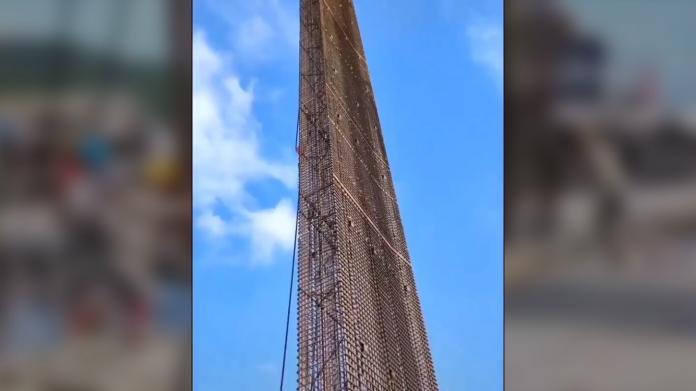A video was recently shared on Linkedin showing a huge and long reinforcement cage for a diaphragm wall being put in place. Please watch the video below.
Some professionals who viewed the video suggested that the reinforcement cage would have be done in segments, in order to guarantee the quality of the concreting. To understand the perspectives properly, let us look at what a diaphragm wall is.
Diaphragm wall is a continuous reinforced concrete wall constructed under the ground. The depth of a diaphragm walls can get up to 25m-50m, and they are constructed in-situ, panel by panel. As a result, the excavation works begin with the mechanical grep being lowered to the ground by a crawler crane and taking excavation. Some of the functions of diaphragm walls are;
- As a retaining wall
- As a cut-off provision to support deep excavation
- As the final wall for basement or other underground structure (e.g. tunnel and shaft)
- As a separating structure between major underground facilities
- As a form of foundation (barrette pile – rectangular pile)
Knowing that such construction and concreting must be done at great depth which may not be easily accessible for human inspection, it would be impractical to prepare the reinforcement cage in segments. The option for quality work to ensure properly consolidated concrete will have to come from the contractor through professional concreting and carefulness using pumps. Let us look at some of the comments from the post.
Why? are they trying to save on lap joints? this structure can be cast cheaply on hop up instead of using hugely expensive cranes. And how will they keep it safe while they are casting it not to mention tensile forces from all that rebar flapping around..
It’s diaphragm wall & tremie will be used to pour concrete to avoid segregation of concrete due to higher level. On time casting Ensures integrity and no weak point in structure as after casting excavation will be done on one side, other side would add large earth pressure.
Wow that is a deep one, the concrete pour must be exceptionally well controlled to ensure no voiding
Someone asked,
Unbelievable… How all this height of reinforcing steel cage stable? …. we need explanation
The response given to the question is shown below;
Standard procedure for a diaphragm wall completed in sections. There will be spacers to keep the cage in position. If you go onto any installer web page you will see the procedure in detail or watch on youtube
Other important comments are as follows;
This is for Diaphragm wall. Placing concrete is not the problem . The main problem if any defects happens that’s the challenge.
Appears to be for a diaphragm wall or the like, hence the trench. Tremie pipes would likely be used for the placing of the concrete.
There is no vibrators used in such castings. Pouring concrete using tremie pipes in. Especially the pit is filled with slurry or fluids to support unstable soil strata until concreting.
Really a daring try.. Assuming the concreting by ultra high performance SSC without vibrators. But what it’s going to shore for what depth. Also I assume the above comment on segments are for rebar cages not the concreting or construction as the diaphragm walls shall go in single pore (please correct me if wrong). So the question is what for this not how!
In 1970 Diaphram wall of length 25+ meter were cast in Kolkata Metro Project using tremie for concrete placement. The entire pit was dug using grab cutter and used to be filled with bentonite slurry for stability of the pit.
I understand that Self Compacting concrete with allowable aggregate with allowable degree of strength gain during pour without cold joints will be a good option.
Very interesting video. Diaphragm walls have been used in UK reaching depths about 40m in circular shape. From the design point of view, it has been a challenge in all aspects as numerical modelling, groundwater strategy, tolerances, etc
Thank you so much for reading. I hope you have learnt something from the discussion. If you have some time to spare, you can take some free online quiz to refresh your mind on some important topics in Civil Engineering.










